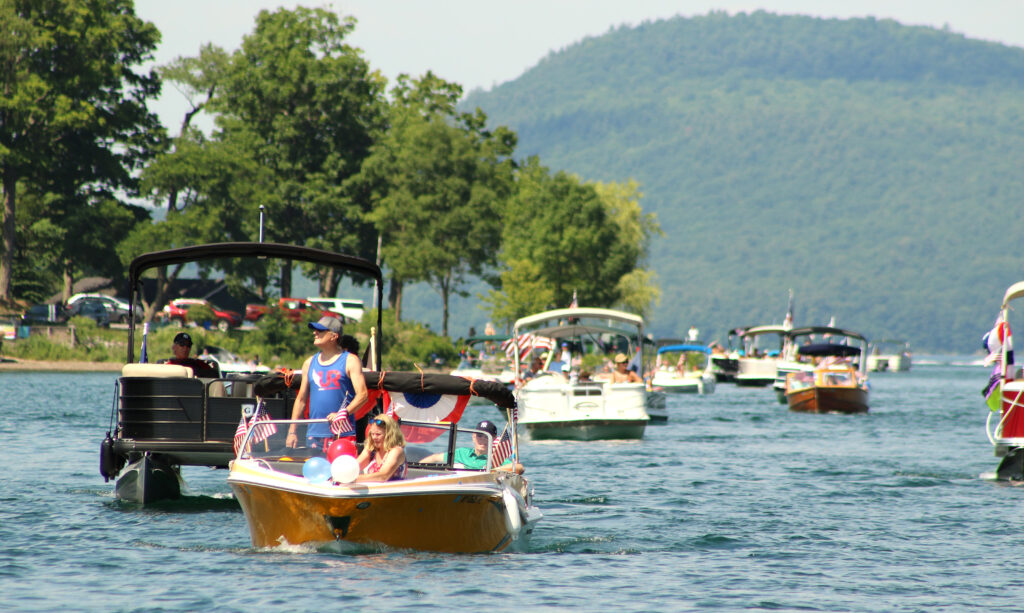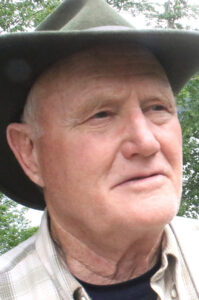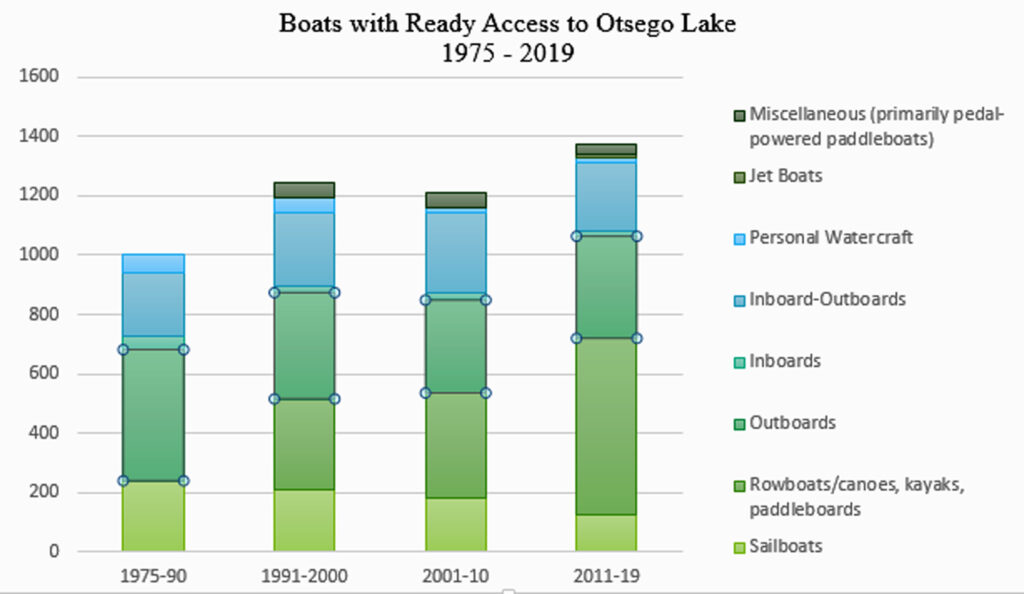For The Love Of Boating
Since 1975, Larger Boats On Otsego Lake,
But Owners Using More Smaller Craft, Too
Editor’s Note: Bill Harman has led SUNY Oneonta’s Biological Field Station on Otsego Lake since its founding.


Historically, as in all our inland lakes after the original European settlement, rowboats, canoes, and sailboats capable of carrying a few passengers dominated Otsego Lake.
Early on it provided a corridor between the waters of the Mohawk drainage and the Southern Atlantic states via the Susquehanna River and was of national importance. It was used for a diversity of commercial and military activities over that length of time.
The first dirt road was built up the east side of the lake by William Cooper in 1787. By 1818, sections of road had begun to be built along the west side of the lake between Cooperstown and Springfield, but there was no direct route until about 1917.
Those early roads did not provide access to hotels and residences along the lake since they were constructed along the ridgetops to avoid the necessity of building bridges over the many streams running to the lake.
During that period, the lake itself served for commercial as well as recreational transportation. The first steamboat was launched in 1858. The last commercial steam vessel plied the lake in 1933.
During the height of those activities in 1894, 10 steam-powered vessels were active on the lake. At least two, the “Natty Bumppo” and the “Cyclone,” could carry more than 300 passengers.
Since 1975, the SUNY Oneonta Biological Field Station has been conducting summer censuses of boats on the water, as well as those placed for immediate access and including those involved in rental operations.
Between that time and 2019, the total numbers of boats increased gradually from 864 to 1,366 with the biggest increase from 1991 to 2000 due to a rapid increase in canoes, followed by kayaks and most recently, paddleboards.
Personal Watercraft (PWCs), Jet Skis and their like, appeared on the scene during that same time. This assessment does not consider boats launched for day use at public or private launches, which have the potential to increase traffic on the water.
Since 1975, sailboats on the lake have undergone a gradual decrease. Early on, the larger day cruisers and recognized classes of larger racing boats were most abundant.
The loss of the Star fleet of keelboats at the Cooperstown Country Club and the popularity of boats designed for one individual (Sunfish, Lasers, etc.) changed the character of sailing on Otsego despite activities at the Cooperstown Sailing Club that continue to this day, and the popularity of wind surfing between 1991 and 2010. The latter have been recently replaced by paddleboards.

There has been a slight but steady decrease over time of powerboats, despite an increase in pontoon boats powered by outboard engines since 2000. Changes from low horsepower outboards, primarily smaller fishing boats in part due to the loss of large commercial rental establishments (Thayer’s Livery with over 200 boats, for example) to larger watercraft brought changes to the character of power boating on Otsego, as did the loss of classic inboard runabouts and large cruisers which have now been replaced by inboard/outboard runabouts.
PWCs, which were not documented before 1991, have moved from stand-up to sit-down models that have become quieter, somewhat larger and are now less of a concern than when they were when first introduced. Larger jet boats were not documented on Otsego before 2011-19.
Changes in recreational boating on Otsego Lake since 1975 have reflected increasing population densities and users that have become more affluent operating larger, higher-powered vessels. Many of those same individuals and their families also use small sailboats, kayaks and paddleboards.
These changes can be interpreted with the potential lake impacts in mind, as the types of watercraft in use have implications for the degree of shoreline disturbance experienced; various types of watercraft generate different stressors and impacts due to their mode of operation, size of wake generated, typical use patterns (single trips, slow speed, continuous operation, etc.).
Boats capable of generating larger wakes for water sports (e.g. wakeboarding) cause stronger wave action on the shoreline than smaller boats; these boats also tend to operate continuously for longer periods of time.
Therefore, while the number of motorized boats may be a smaller percentage of the total boats, the impact that they have in terms of shoreline disturbance may well be greater than the typical motorized craft of previous decades.
Non-motorized craft are not associated with shoreline disturbance in this way, though there are risks of conflicts with motorized traffic and safety concerns during high traffic periods.
The above statements are validated by intensive studies in 1993 by France and Albright that showed a correlation between the intensity of cruising boats traveling within 500 feet of the shoreline, phosphorus concentrations and turbidity in the water column.
High amounts of sediment turnover and deposition attest to more serious impacts in areas protected from the prevailing winds (France and Albright) These data provided much of the information that led to the development of Otsego Lake’s 200-foot no-wake zone along the shorelines.


A minor technicality: One mentioned source of Otsego Lake was stated to be Mohawk drainage. Actually that goes north to the Mohawk River. The mentioned northern drainage actually comes from the south side of the hills dividing Northern Otsego County from the. Mohawk Valley. Summit Lake in Springfield, fed by the Kyle is an example, as is Cherry Valley Creek. Byng Huntington